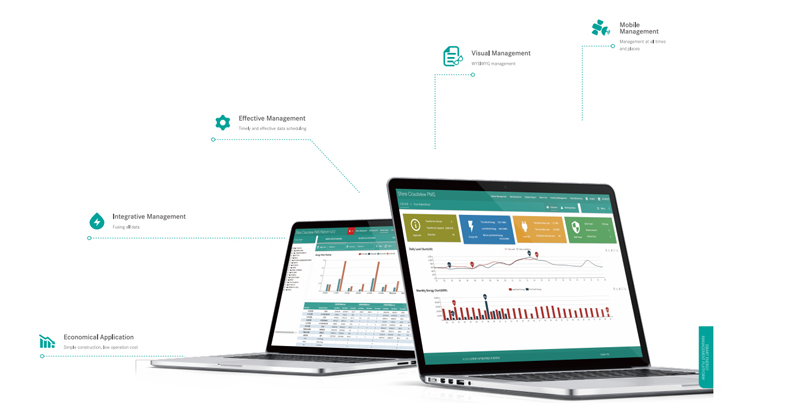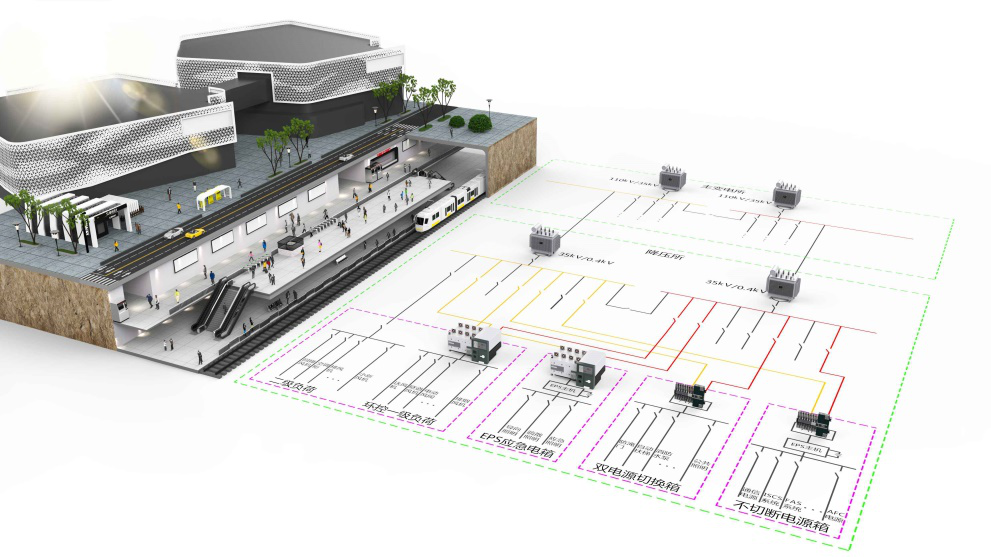.png?v=v1)
.png?v=v1)
2020.12.30
The design of smart building is composed of many subsystems, one of which is the design of energy management system, which can enable the smart building achieve the purpose of energy saving, emission reduction, consumption reduction and efficiency increase. Smart building energy management system is mainly realized by building equipment management system (BAS). BAS system can optimize the management of power, lighting, air conditioning and other equipment according to the pre arranged time program, so as to achieve the purpose of energy saving.

In engineering, the following energy-saving measures are usually adopted:
1) Timing method: according to the work and rest schedule of the building, start and stop the control equipment on time, such as fans, lighting, etc.
2) Temperature-time delay method: according to the delay time of temperature maintenance in the building, turn off the main air conditioner or boiler in advance to achieve the purpose of energy saving.
3) Adjust the water supply temperature: adjust the water supply temperature of the air conditioning energy management system according to the actual indoor and outdoor temperature, set the appropriate water supply temperature to reduce the excessive operation of the system host, and achieve energy saving.
4) Economic operation method: when the outdoor temperature reaches 13 ℃, the outdoor fresh air can be directly used as the return air; when the outdoor temperature reaches 24 ℃, the outdoor fresh air can be directly sent into the indoor. In this case, the smart building energy management system can save energy for processing the return air system.
5) Equipment life-span operation: the cold and heat source host, pump, fan and other equipment in the building are operated alternately for equal time to extend the operation life of the equipment and save maintenance costs.
According to foreign engineering experience, smart building energy management system can save about 20% energy for new office building. China has been committed to vigorously developing the economy for a long time, but the economic development cannot be separated from the support of resources, and the dependence on resources is increasing day by day, resulting in huge consumption of resources, but many resources are not renewable. There is a huge contradiction between the demand of social and economic development, the limitation of resources and environmental protection. Therefore, how to use fewer resources to produce greater economic benefits, and at the same time protect the environment on which we live and achieve sustainable development, has become a national key research topic, and as well as an industry that strongly supports development. Energy management system for the purpose of energy conservation and emission reduction, consumption reduction and efficiency enhancement, and green environmental protection came into being.

The smart building energy management system takes computer, communication equipment and measurement and control unit as the basic tools. It provides a basic platform for real-time data acquisition, switch state monitoring and remote management and control of the smart building energy management system of large public buildings. It can form an arbitrarily complex monitoring system with detection and control equipment. The energy management system mainly adopts a hierarchical distributed computer network structure, generally divided into three layers: station control management layer, network communication layer and field equipment layer.
Station control management
The station control management layer is the direct window of human-computer interaction and the top part of the system. It is mainly composed of system software and necessary hardware equipment, such as industrial computer, printer, UPS power supply, etc. The monitoring system software has a good human-machine interface, which can calculate, analyze and process all kinds of collected data and information, and reflect the operation status of the site by means of graphics, digital display and sound.
Network communication layer
The communication layer is mainly composed of communication management machine, Ethernet equipment and bus network. This layer is the bridge of data information exchange, which is responsible for the collection, classification and transmission of the data information returned by the field equipment, and at the same time, it transmits various control commands of the upper computer to the field equipment.
Communication management machine: it is the system data processing and intelligent communication management center. It has the functions of data acquisition and processing, communication controller and front-end computer.
Ethernet equipment: including industrial-grade Ethernet switch.
Communication medium: the system mainly adopts shielded twisted pair, optical fiber and wireless communication.
Field equipment layer
The field equipment layer is the data acquisition terminal, which is mainly composed of smart meters. The data acquisition terminal is composed of distributed I / O controller with high reliability and field bus connection, which uploads the stored building energy consumption data to the data center. The energy consumption data monitored by the measuring instrument must be complete, accurate and transmitted to the data center in real time.
Smart building energy management system takes energy management and energy-saving, decision-making as the purpose, collects equipment system operating information and energy-related data in real time, optimizes energy use and eliminates energy waste through analysis, control, and management methods, and improves the efficiency of operation management and service quality.
Smart building energy management system achieves the optimal operation(maximum energy efficiency), the lowest energy consumption (minimizing energy consumption), the maximum management efficiency and the effective cost control of equipment with accurate monitoring of operating status data, accurate and optimized operation control, global and reasonable management scheduling and friendly and convenient interactive interface.
In the operation of smart building energy management system, the lowest energy cost is the goal to implement energy dispatch control; t the lowest environmental cost can also be the goal, and energy dispatch control can be implemented under cost constraints; even the load response can be implemented, and the power load of buildings can be regulated according to the load situation and electricity price adjustment information of the power grid.
In recent years, with the national development of energy conservation and emission reduction, the energy conservation of smart buildings has become the focus of attention. An overall, systematic, comprehensive, simple and efficient energy-saving solution has been paid more and more attention. Therefore, the smart building energy management system, which have realized the remote monitoring and management of classified energy consumption and itemized energy consumption has become the inevitable trend of intelligent building development.
Copyright © 2019.Company Name All Rights Reserved.